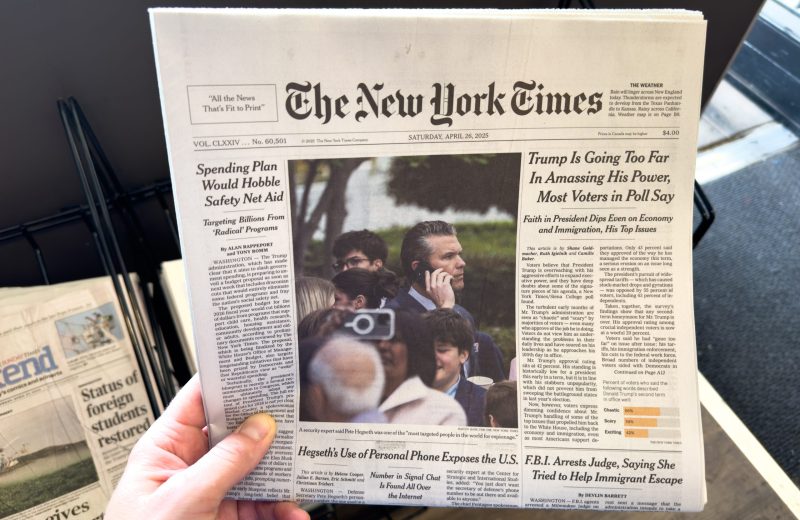NBAA slams The New York Times ‘false narrative’

Ed Bolen, president and CEO, National Business Aircraft Association (NBAA) has hit out at an editorial video posted by The New York Times, which he said contained “misstatements and mischaracterisations” about how general aviation, including business aviation, contributes to the funding of the US national aerospace system.
Business aviation pays its fair share for use of the aviation system mainly through pay-at-the-pump fuel taxes, he argued in an open letter to the publication. Also, contrary to the video’s unfounded allegation, the burden each aircraft places on the system varies greatly, he wrote.
The major cost driver for the Air Traffic Control (ATC) system is the airlines’ hub-and-spoke networks, which need large resources and infrastructure to handle flights at peak congestion times. “Managing a large commercial airliner in the complex, often congested airspace around major commercial hubs such as New York, Chicago, or Atlanta requires far more resources than managing a small aircraft at an outlying community airport,” according to his letter. “This kind of marginal use of the air traffic control (ATC) system by general aviation does not impose the same cost on its operation as that driven by the airlines.”
Bolen’s letter also referenced an independent study of ATC use by various stakeholders – airlines, general aviation and military – from the Government Accountability Office (GAO). This revealed general aviation accounts for only about 7% the system’s use, which the GAO study described as: “actually, quite small”.
Most important, the video failed to acknowledge the role of business aviation as a critical part of the US transportation system, he wrote. The sector connects communities of all sizes, supports more than 1m American jobs and contributes $340bn a year to the US economy.
Bolen concluded his letter with the comment: “Misleading and oversimplified portrayals like the one in your video do a disservice to the public and the policymakers tasked with making informed decisions about our aviation system”.
Read below Bolen’s full letter, dated August 10th, to The New York Times.
Meanwhile, a spokesperson for the publication told CJI: “We stand by our editorial as accurate. Private aviation accounts for 7% of system use and only 0.6% of the fees collected by the FAA. Those facts are not in dispute.”
Ed Bolen’s open letter to The New York Times
Dear Editors,
Your recent editorial board video, If You Fly Economy, You’re Paying for Someone Else to Fly Private (Aug. 10th), puts forward a false narrative about what general aviation, including business aviation, pays within our national airspace system.
The reality is that just like the airlines, business aviation pays its fair share for use of the aviation system primarily through pay-at-the-pump fuel taxes. Furthermore, contrary to the video’s unfounded allegation, the burden each aircraft places on the system varies greatly.
In fact, the major cost driver for the ATC system is the airlines’ hub-and-spoke networks, which require large concentrations of resources and infrastructure to handle flights at peak congestion times. A better analogy than the “parking garage” example cited in your video would be a restaurant table for five diners, where one diner orders the most expensive items on the menu, then expects everyone to split the check equally.
Managing a large commercial airliner in the complex, often congested airspace around major commercial hubs such as New York, Chicago, or Atlanta requires far more resources than managing a small aircraft at an outlying community airport. This kind of marginal use of the air traffic control (ATC) system by general aviation does not impose the same cost on its operation as that driven by the airlines. The independent Government Accountability Office (GAO) has concluded as much, noting that “general aviation flights often use minimal ATC services, so their costs to the system are actually quite small”.
Consider the real-world example illustrating this widely recognised fact: in the years following the Sept. 11th attacks, general aviation traffic was removed from Ronald Reagan Washington National Airport (DCA) without any appreciable change in the airfield’s operational cost.
Perhaps most importantly, your video looked past the role of business aviation as a critical part of our transportation system, connecting communities of all sizes, supporting more than a million American jobs, and contributing $340bn annually to the US economy. Misleading and oversimplified portrayals like the one in your video do a disservice to the public and the policymakers tasked with making informed decisions about our aviation system.
Sincerely,
Ed Bolen
President and CEO
National Business Aviation Association
t.
.







